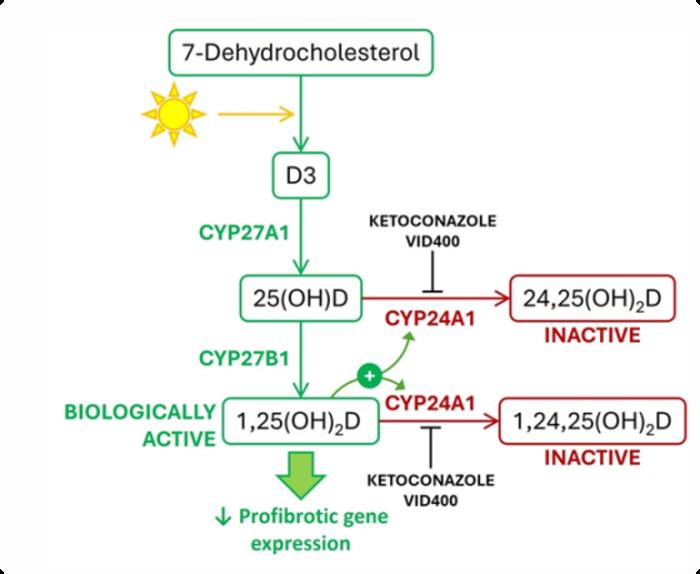Vitamin D and the enzyme CYP24A1 may mitigate the fibrotic characteristics of keloids, a challenging skin condition marked by high recurrence rates and resistance to conventional treatments.
The study, which appears in Burns & Trauma, found that suppressing CYP24A1 could reduce the expression of profibrotic genes.
The researchers isolated primary keratinocytes from normal and keloid skin samples. By culturing these cells with and without vitamin D, alongside inhibitors such as ketoconazole and VID400, the researchers assessed their impact on gene expression and cell behavior. They found that CYP24A1 was significantly overexpressed in keloid keratinocytes at both mRNA and protein levels.
While ketoconazole broadly reduced cell proliferation, VID400 specifically targeted the growth of keloid keratinocytes without affecting migration. Furthermore, both inhibitors effectively suppressed the expression of profibrotic genes, such as periostin and hyaluronan synthase 2. When combined with vitamin D, these inhibitors amplified gene-specific effects, suggesting their potential as adjunct therapies for keloids.
“The identification of CYP24A1 as a key factor in keloid keratinocytes marks a transformative moment in dermatology,” says Dorothy M. Supp, PHD, a researcher at the University of Cincinnati in Cincinnati, OH, in a news release. “This study provides a deeper understanding of the molecular mechanisms driving keloid formation and opens the door to targeted therapies. By modulating the activity of CYP24A1, we may improve treatment efficacy and address the recurrence challenges that patients face. This innovative work lays the groundwork for a new era in keloid management.”
PHOTO CAPTION: Production of vitamin D in the skin. Vitamin D3 (D3) is synthesized in keratinocytes from the precursor 7-dehydrocholesterol in response to ultraviolet radiation in sunlight. D3 is metabolized to 25 hydroxy vitamin D (25(OH)D), the form most commonly measured in the blood as a marker of vitamin D status, by CYP27A1. 25(OH)D is metabolized to 1,25-dihydroxyvitamin D (1,25(OH)2D), the hormonally active form of vitamin D, by CYP27B1. The enzyme CYP24A1 inactivates both 25(OH)D and 1,25(OH)2D. Transcription of the gene encoding CYP24A1 is induced by 1,25(OH)2D, which serves as a feedback loop to modulate levels of active vitamin D. The inhibitors ketoconazole and VID400 block the activity of CYP24A1, which may lead to decreased profibrotic gene expression by decreasing inactivation of 1,25(OH)2D. 159x134mm (300 x 300 DPI)
PHOTO CREDIT: Burns & Trauma


